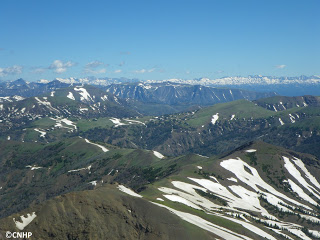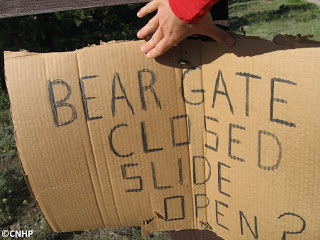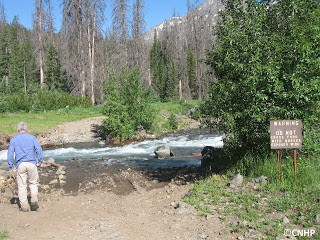For the third time in the past year, volunteer pilots from Lighthawk lent a hand (and wings) to CNHP project work. The Lighthawk organization provides donated flights to conservation groups. This July, Lighthawk volunteer pilots flew CNHP staff over alpine ridges and rugged peaks in Yellowstone National Park. The goal of the flight was to find peaks suitable for establishing a GLORIA site within the Park. GLORIA sites, located throughout the world, are used to monitor the effects of climate change on alpine vegetation. CNHP has partnered with the National Park Service to establish sites in Yellowstone and Grand Teton National Park.

(Left to right) Lighthawk volunteers Richard Spencer (pilot), Polly Spencer (co-pilot) with Bernadette Kuhn (CNHP botanist) and Joe Stevens (CNHP ecologist).
Richard Spencer, Lighthawk volunteer pilot, flew CNHP staff members up the Sunlight Creek drainage, and over peaks in the Absaroka Range on the eastern boundary of the Park. We were able to identify potential peaks for GLORIA, as well as assess snowpack along our proposed route.

The Absaroka Range along the eastern boundary of Yellowstone National Park.
Over the last six months, we have been preparing to establish a GLORIA site in Yellowstone National Park. Record snowpack, dangerous stream crossings, wildlife closures, and even a landslide have made access to our study area a bit challenging.

Uncertainty in grizzly bear country.

Joe Stevens assesses a deep hole carved out in the middle of the Sunlight Creek channel.
Thanks to Lighthawk and Richard and Polly Spencer, we were able to reach to this remote area and evaluate conditions in a few short but very scenic hours.




